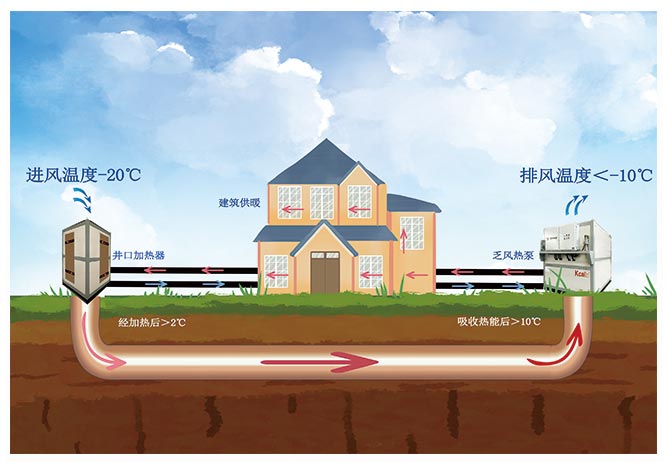The exhaust air heat exchange technology has important application value in the field of refrigeration and heating. Today, Kcalin will explore the application of exhaust air heat transfer technology in this field and analyze its advantages, including energy conservation, environmental friendliness, and economic benefits.
In the field of refrigeration and heating, the exhaust air heat transfer technology is widely used to recover and utilize the exhaust air energy in the system. Exhaust gas refers to the low temperature, low humidity, or low pressure exhaust gas generated during industrial processes due to by-products or system operation. Below, we will explore the application of exhaust air heat transfer technology in the field of refrigeration and heating, and analyze its advantages.
Energy conservation: The exhaust air heat exchange technology can recover and convert the heat from the exhaust air into useful energy, such as refrigeration or heating. By utilizing exhaust air reasonably, the consumption of traditional energy can be reduced and efficient energy utilization can be achieved. This not only reduces energy costs, but also helps to reduce the impact on the environment.
Environmentally friendly: The application of exhaust heat exchange technology can reduce exhaust emissions and pollution to the atmospheric environment. By recovering the heat from the spent air, the combustion of fossil fuels can be reduced, thereby reducing greenhouse gas emissions. This helps to protect the environment, mitigate climate change, and align with the goals of sustainable development.

Economic benefits: The exhaust air heat exchange technology has good economic benefits in the field of refrigeration and heating. By recovering the heat energy from the exhaust air, the energy cost of system operation can be reduced and energy utilization efficiency can be improved. At the same time, reducing dependence on external energy can also help reduce energy procurement costs. This makes the exhaust heat exchange technology more competitive economically.
Industrial waste gas treatment: Many industrial processes generate high-temperature waste gas, such as grate waste gas and flue gas. Through exhaust heat exchange technology, the heat energy in these exhaust gases can be recovered and used for refrigeration or heating. For example, in the steel industry, the heat energy in the exhaust gas of high-temperature furnaces can be recovered through exhaust air heat exchange technology and used for heat treatment or steam generation, thereby achieving energy conservation and cost reduction.
Refrigeration system optimization: In commercial buildings or industrial facilities, refrigeration systems typically generate a large amount of waste heat. By using exhaust air heat exchange technology, waste heat in refrigeration systems can be recovered and used for heating or other thermal energy needs. This not only improves energy efficiency, but also reduces energy costs and dependence on external energy.
Underground mine ventilation system: In underground mines, the exhaust air generated by the main ventilation system usually has high temperature and humidity. By using exhaust air heat exchange technology, the heat energy in the exhaust air can be recovered and used for cooling or heating in underground mines. This can improve the working environment of miners, improve energy utilization efficiency of mines, and reduce energy consumption and operating costs.
The exhaust air heat exchange technology has important application value in the field of refrigeration and heating. By recycling the heat energy from the exhaust air, energy conservation, environmental protection, and economic benefits can be achieved. In the fields of industrial waste gas treatment, optimization of refrigeration systems, and underground mine ventilation systems, there are various application cases of exhaust air heat transfer technology. Mining enterprises and other enterprises in the refrigeration and heating industry should actively adopt exhaust air heat exchange technology to achieve efficient energy utilization, reduce environmental impact, and achieve economic benefits. This will bring opportunities for sustainable development for enterprises and contribute to the realization of Low-carbon economy and environmental protection goals.







Comment